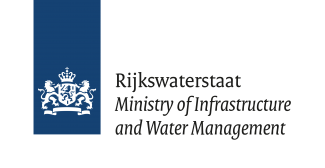Status as at October 2025:
**Our SES report I-29 entitled "Impact of changing water demand on the transboundary Rhine River basin water balance and flow under climate change" October 2025 can be downloaded at the bottom of this page**
The Rhine is an important source of water during dry summers. Nine states and regions in the Rhine transboundary river basin closely co-operate in order to harmonize the many interests of use and protection in the Rhine area. Switzerland, France, Germany, Luxemburg, the Netherlands co-operate with Austria, Liechtenstein, Belgium and Italy. Changes in the Rhine discharge potentially has a large impact on all water-dependent sectors. Several studies (Stahl et al (2022), Buitink et al (2023), Nilson (2024)) have indicated that climate change is causing shifts in precipitation and temperature patterns. Related droughts, floods and high-water temperatures may have a negative impact on the ecosystem of the Rhine and its tributaries as well as on water usage. However, they did not include the possible impact of changing water demand in the Rhine basin, although this might have a significant impact on the Rhine discharges as indicated by the study of Ruijgh et al (2019) (downloadable at the bottom of this page) upon request of the International Commission for the Hydrology of the Rhine basin (CHR) as part of its Socio-Economic Scenarios (SES-) project.
The SES project of the CHR aims at providing scientific-based information on water availability, water use and consumption, water allocation and water shortages for the Rhine basin in transboundary context based on plausible future scenarios. Additionally, it aims to create awareness among stakeholders and the general public on future water shortages under plausible future scenarios. Results are also input for the updates to the Rhine River basin climate adaptation plan, helping countries to decide on necessary actions to address issues and be jointly, on the transboundary level, better prepared for future water scarcity challenges during dry periods.
For the 2023-2025 phase of the CHR SES project a project team of Deltares co-designed shared socio economic scenarios’ narratives for better drought risk understanding and water allocation: Rhine Sustainable Community, Rhine Middle of the Road and Rhine Economic Growth. The three narratives are described in a qualitative and quantitative way, combined with regional climate change scenarios, and are modelled using the novel Wflow-RIBASIM modelling tool to conduct a comprehensive water balance and low flow assessment for the Rhine River basin. Collection of global, EU, national and more local datasets as well as information regarding socio-economic scenarios and water use in countries and at the EU support the execution of the project. More information on the RIBASIM model can be found in the document downloadable at the bottom of this page.
The activities are done under the supervision of the CHR board and guidance of the secretariat. During the execution of the research the team has been collaborating intensively with the other two Rhine commissions ICPR and the CCNR. The EU-funded Horizon STARS4Water project made it possible to accelerate the research and make use of novel datasets and tools. A poster on current work and preliminary results (from 2024) in collaboration with the aforementioned organisations can be downloaded at the bottom of this page.
The findings of this project underscore the importance of transboundary coordination and adaptive governance in managing future droughts and water scarcity in the Rhine Basin. It contributes in raising awareness among stakeholders on water allocation, prioritization, and the risks of future water shortages. The project provides valuable information for fostering policy dialogue and basin-wide planning efforts.
Our report I-29 entitled “Impact of changing water demand on the transboundary Rhine River basin water balance and flow under climate change” can be downloaded at the bottom of this page.

